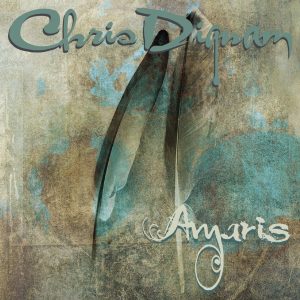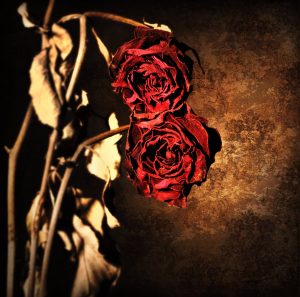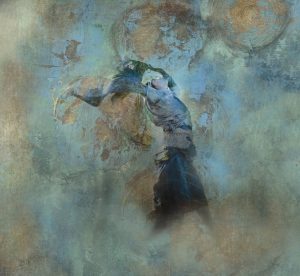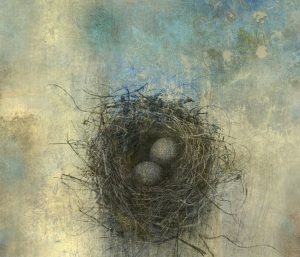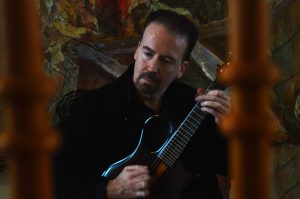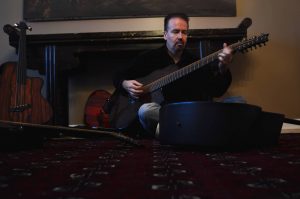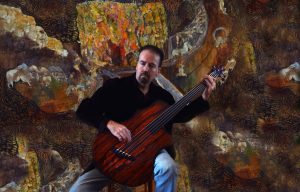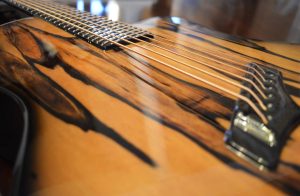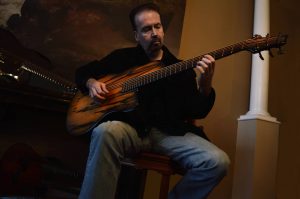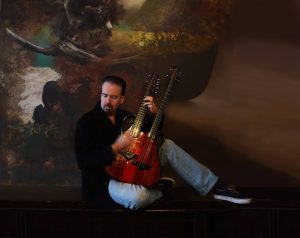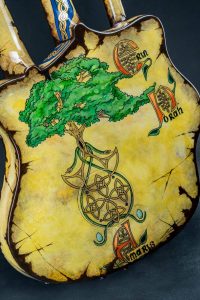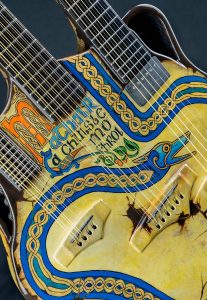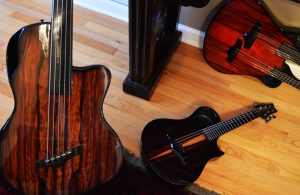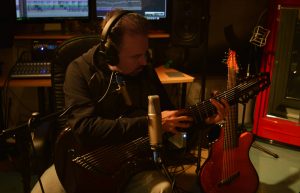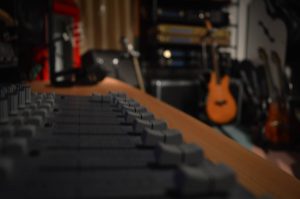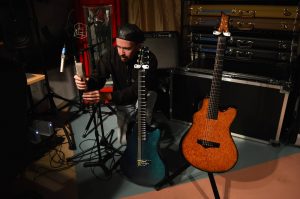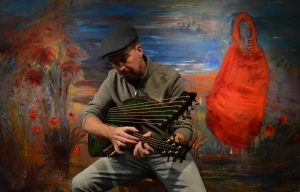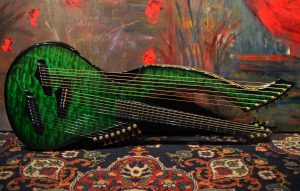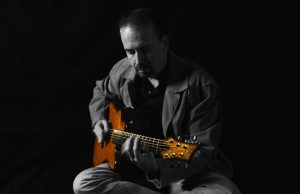Amaris
About Amaris
Late in 2012, during the final stage of laying down tracks prior to mixing 2013’s Pure Virgin Vinyl, I stumbled upon a pair of acoustic instruments that simply melted in my hands. They were constructed by the Emerald Guitar Company in Donegal, Ireland and were the X20 6-string and Amicus 12-string soprano guitar models. In addition, and most notably, these instruments were entirely composed of carbon fiber without any body joints or seams. Coming from someone who had considered himself an acoustic guitar purist, this was both intriguing and unnerving. Throughout my professional career, I had spent a considerable amount of time playing countless acoustic guitars in search of the correct combination of tonewoods and resonance; essential elements for a nice sounding acoustic guitar. The excitement from the feel and tone of these incredibly resonant carbon fiber instruments was enhanced by the ergonomics of the carbon fiber design and the fact I could request countless specific options to customize each guitar. These instruments empowered and provided me with endless possibilities and I have used Emerald Guitars exclusively ever since.
I have personally worked with Emerald Guitar Company founder and builder Alistair Hay over the past seven years to design a variety of acoustic guitars employed throughout all of the recordings on Amaris. Some of these guitars include a range of 32” to 16” scale lengths, 12-, 9-, and 7-stringed necks with specific widths and shapes, fanned frets, myriad body sizes (Balor, Chimaera, X35, X20, X7, and Amicus), synth access, and sub bass and super trebles on my X20 harp guitar. These options enhanced and supported my love of writing and recording with standard and open tunings. The result was a wide array of acoustic guitars whose musical pallet channeled through me and inspired me to write what are the compositions on Amaris.
For Amaris, I focused on songs that were purely acoustic and guitar centric – with no other musical accompaniment outside of me humming, whistling, snapping my fingers, clapping my hands, and/or using my foot tambourine. This album is my first all-acoustic project and is also a companion to 2018’s Storyteller in that each musical piece was written to be autobiographical but told through instrumental, acoustic guitar. Each song, as reflected in its title, is about a specific place, a specific person/people, or specific time in my life.
As you listen to these recordings, keep in mind there are no drums or other percussive instruments creating all the tones and sounds heard throughout Amaris. You may think you are hearing drums or someone playing percussion, but you are not. Every percussive tone was created by and originates from me tapping on a variety of acoustic guitars. I experimented with tapping on different guitars and different parts of the guitars’ bodies to create numerous overdubs, which created acoustic guitar, percussive rhythms for many songs on Amaris. The closest I came to including any other instruments was via a MIDI signal driving a few pad patches on a couple of my acoustic guitars with synth capabilities as well as when I recorded a foot pedal “hammering” against the back of a mic’d acoustic bass guitar’s body. My mic’d foot-pedal-hammer-on-a-guitar-body-in-lieu-of-a-kick-invention (whew!) was certainly a unique experiment in creating tonal textures. This technique allowed me to make multiple layers upon layers of overdubs to create unique tones.
I experimented with tapping glass and brass guitar slides against the guitars’ bodies and necks to create tones that sounded like castanets as well as scraping a variety of guitar picks across different gauge strings to imitate the rhythmic patterns of a hi hat for in-tempo rhythmic patterns. In addition, some of my Emerald guitars possess a thick finish on the back and sides (called a Crystal ice finish), which I used to my advantage. The Crystal ice finish is a polyester finish that is a textured finish created by Emerald Guitars through a special sanding technique that results in an eggshell-like finish. I found that if I mic’d the side or palm of my hand rubbing the finish, it created a shaker-like percussive sound. I also found that if I used a hi pass filter on the tracks EQ, I could create a washboard sound by scratching with my nails. Lastly, I found that adding in-tempo delay also created unique percussive rhythms, all by tapping, rubbing, and scratching the guitar bodies! I do feel the need to make a public service announcement and proudly state, “No guitars were harmed during the making of these recordings!”
The approach I took towards recording Amaris was certainly a labor of love. It was also unique (and very time consuming), as I have never heard a truly “full” acoustic guitar album like this before. I wanted to create an all-acoustic album that was truly constructed via a variety of acoustic guitars and unique recording techniques. What I ended up with was an ensemble of percussive tones, chordal rhythms, and melodic solos – all forged with acoustic guitar, which created a portraiture of the instrument.
All performances were captured by me playing an assortment of Emerald acoustic guitars, with a variety of open tunings, and various scale lengths. The percussive techniques I employed from tapping on instruments, as well as me, at times, tapping my foot, clapping my hands, snapping my fingers, using a foot tambourine, etc., resulted in a collection of acoustic, spiritually resonant guitar instrumentals that translated the autobiographical story behind each track and the spiritual love and messages within each composition that is Amaris.
Produced, Engineered, and Recorded by Chris Dignam at Red Cell Studios Chicago, Illinois for Gram Theft Audio Sound and Production, LLC
Published by CANE Dubh Music (ASCAP)
Equinox Management / 606N Entertainment Group
All songs written and arranged by Chris Dignam
Photography by Norah Dignam
Art direction, design, and layout by Chris Dignam
Chris Dignam – Acoustic steel and classical guitar, harp guitar, acoustic synth, mandolin, bouzouki, various hand/foot tapping for percussive effect, and vocal effects

